History class goes high tech
Students use VR to get deeper understanding of people, places
JMU News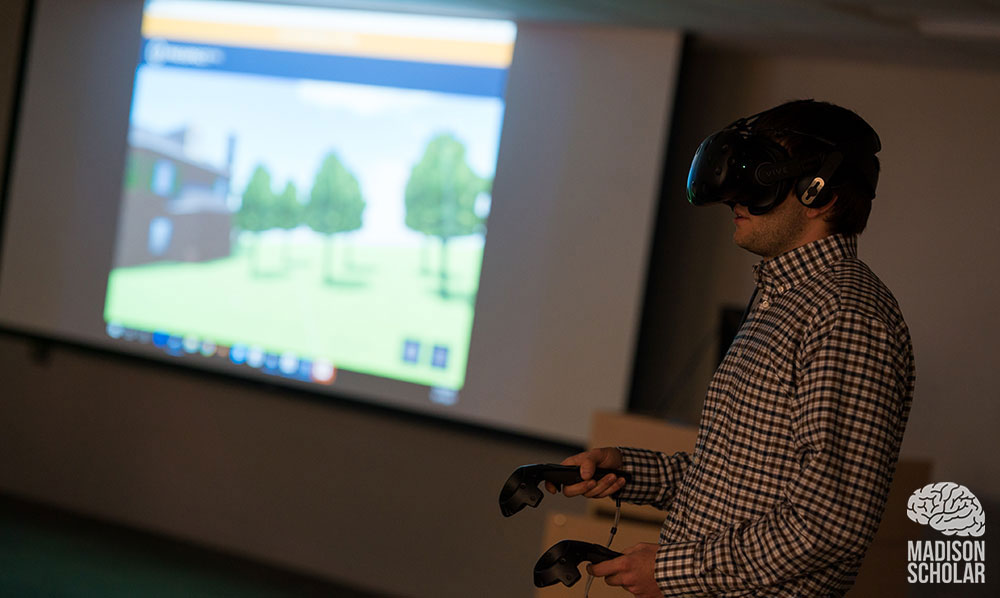
SUMMARY: Andrew Witmer's HIST 422 course incorporates technology to elevate learning of historic buildings from the early American republic.
In a typical history class, students expect to be assigned a lot of writing.
And while students in Dr. Andrew Witmer's HIST 422 class did a lot of writing, they also learned in a different way, incorporating virtual reality technology to construct homes and other spaces used by the historical figures they were studying. With virtual reality you are, in the most literal sense, propelled beyond classroom walls and able to tour the places in your textbook.
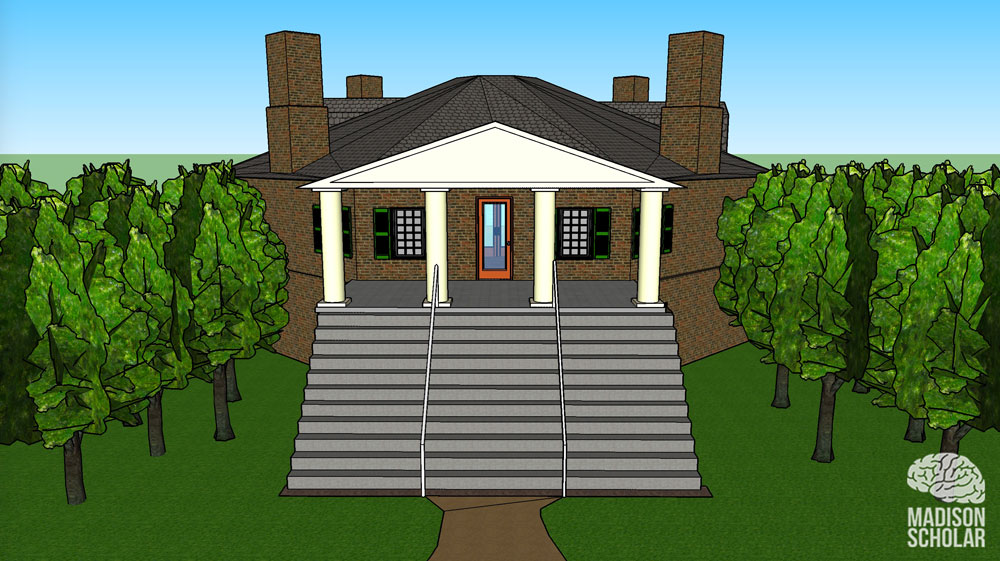 |
| 3D version of the frontal view of Poplar Forest, a plantation house in Forest, Bedford County, Virginia. Modeled by Ty Reed |
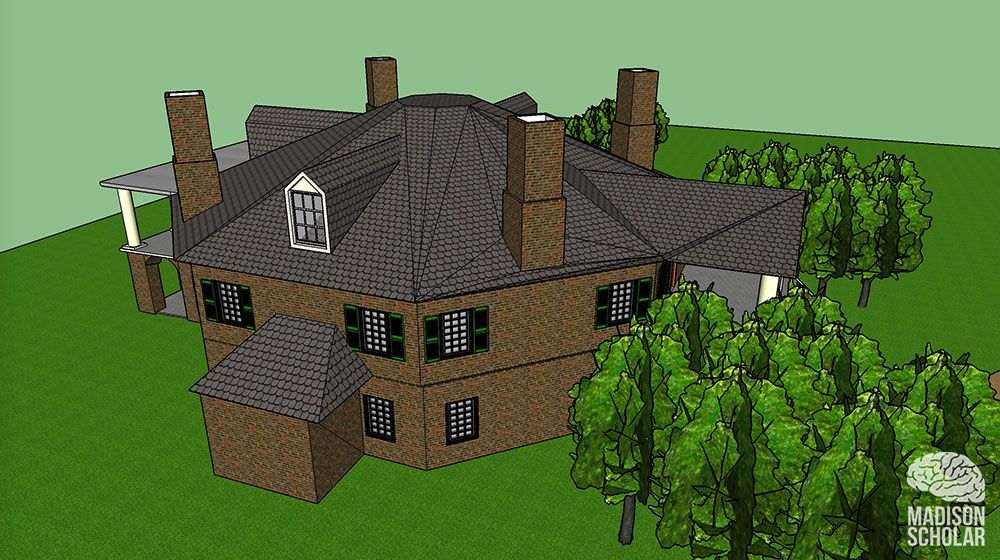 |
| Students were able to navigate in and around the area designed. Back view of the plantation house. Modeled by Ty Reed. |
"Building Poplar Forest (Thomas Jefferson’s plantation) allowed me to experience the space in a completely different way. It was an extremely rewarding experience and something I will remember for the rest of my life," said Ty Reed, a junior majoring in history and minoring in secondary education and interdisciplinary social sciences. Witmer and his students reinvigorated an archaic subject through incorporating digital technologies.
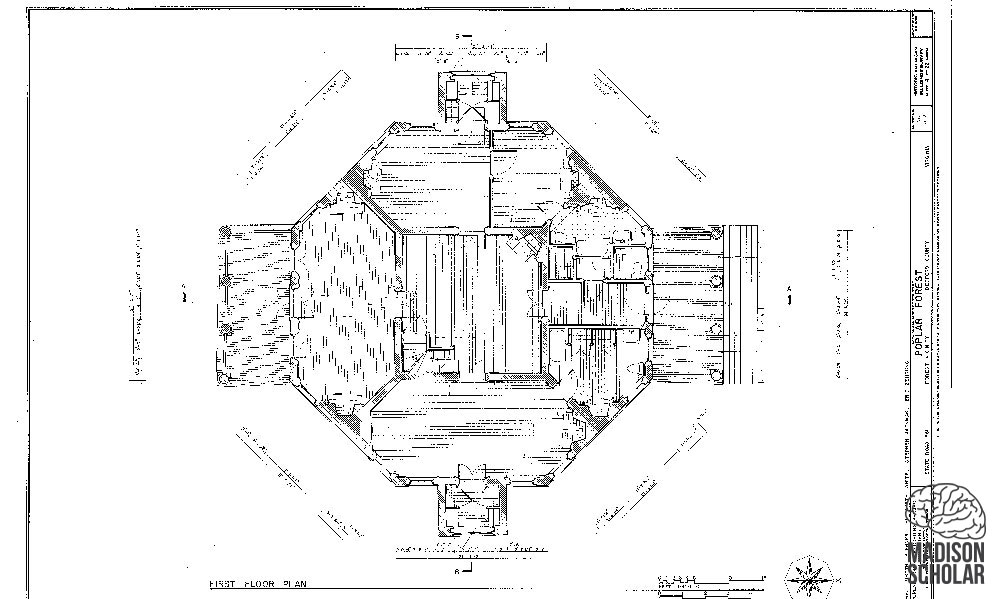 |
| Floor plan of Poplar Forest, which was used in SketchUp to program the 2D image into a 3D model. Source:Historic American Buildings Survey |
Julia Day, a senior majoring in history and minoring in secondary education, added, "Along with the research, creating this space made me feel like I knew the family living in it."
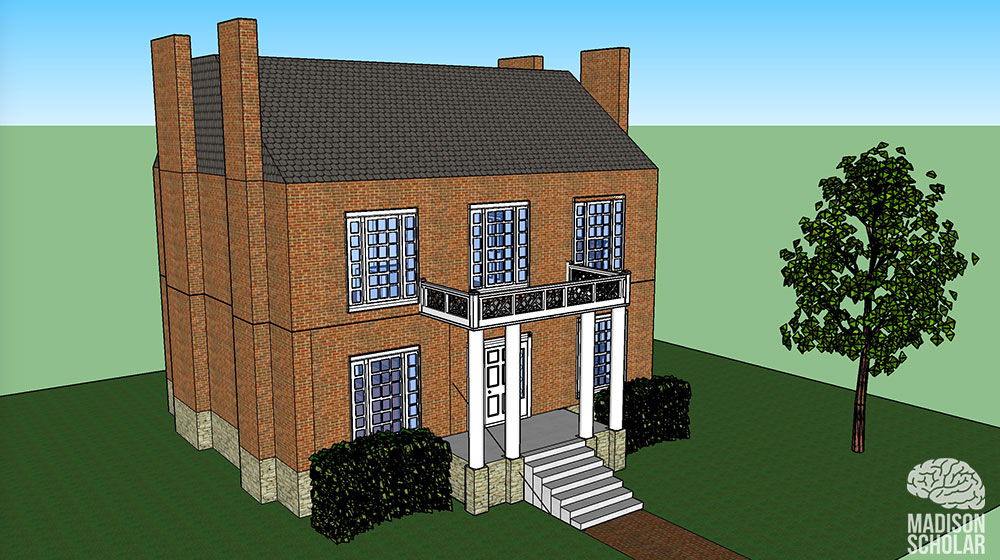 |
| 3D version of Reid-White House, Lexington, Virginia. Modeled by Julia Day. |
Kathleen Olifiers, a junior majoring in history who chose to study and model Abraham Lincoln’s Springfield, Illinois, home, said, "I learned not only about the space but a lot about Lincoln and his family, which I wouldn’t have if I just took another plain history class and read a book."
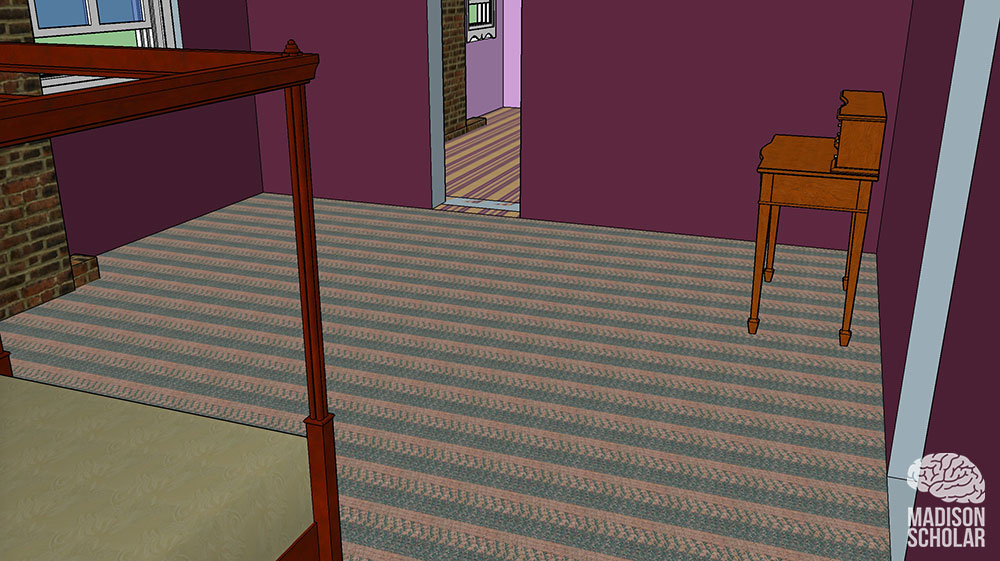 |
| 3D view of Abraham Lincoln's bedroom in Springfield, Illinois. Modeled by Kathleen Olifiers. |
Witmer, an associate professor of history, has been incorporating digital projects into his coursework since 2010. Objects of Faith was a spring 2017 project dedicated to creating 3D models of religious objects with narratives to give historical context. Without completely abandoning traditional teaching practices, the History 422 course brought to life the significance and power of space via virtual reality and 3D technology. Students were required to choose a building from the early American republic (period between the Revolution and Civil War) and create a scale digital model using SketchUp Make, a 3D software. Traditional research, readings and discussions were used to assist students to conceptualize and interpret their 3D models.
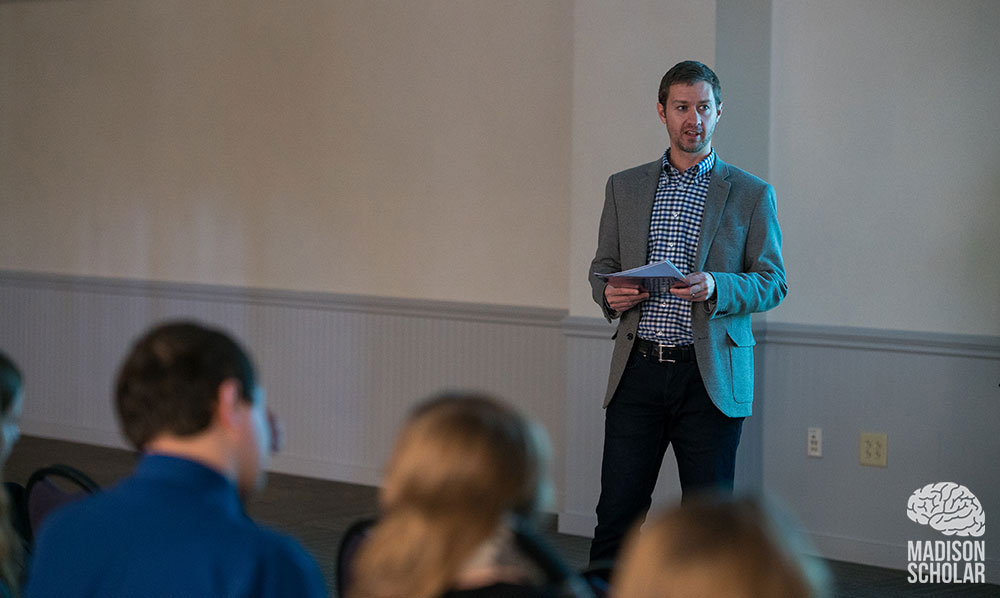 |
| Dr. Witmer giving opening remarks at the HIST 422 final presentations. |
"The goal was to look at spaces from that era and draw on works of scholars who view space as an important factor for historical development, not just as a neutral backdrop for human activity," Witmer said.
Christian Ford, a junior studying history, said the "strongest part of the project was seeing concepts from textbooks come to life. . .a space means nothing without context and written work is less powerful without strong visuals."
In the end, students had to present their work in a new way. Rather than holding cue cards and speaking from behind a podium, they were challenged with presenting their work while wearing virtual reality goggles and using IrisVR Prospect to lead a "virtual tour" of their model. Fortunately to some students, not being able to see the audience was the solution to their stage fright.
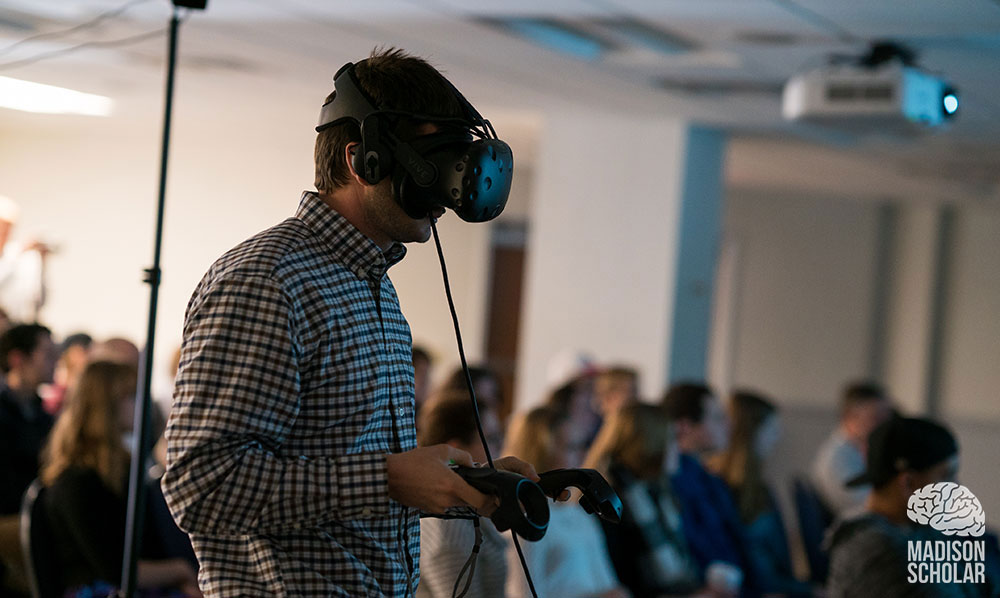 |
| Ty Reed taking his audience on a virtual tour through Poplar Forest. |
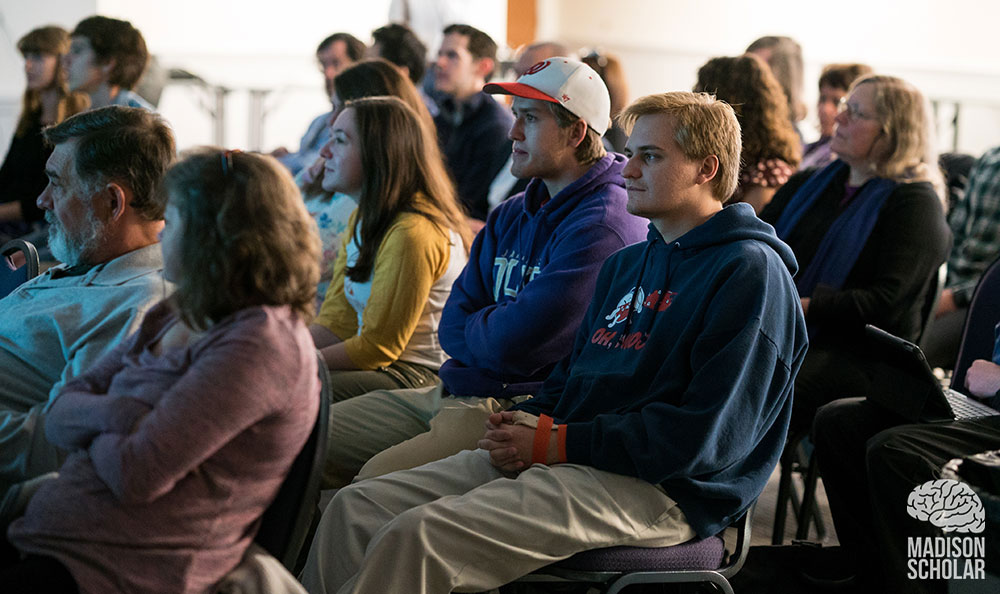 |
| Final presentations were joined by curious and supportive students, parents and faculty members. |
Witmer credits Innovation Services for providing platforms that have enriched his teaching. Kevin Hegg, director of digital projects at Innovation Services, encourages faculty to explore options. "We are here to provide support for these humanities projects with training, individual consultations and student-led workshops for students."
